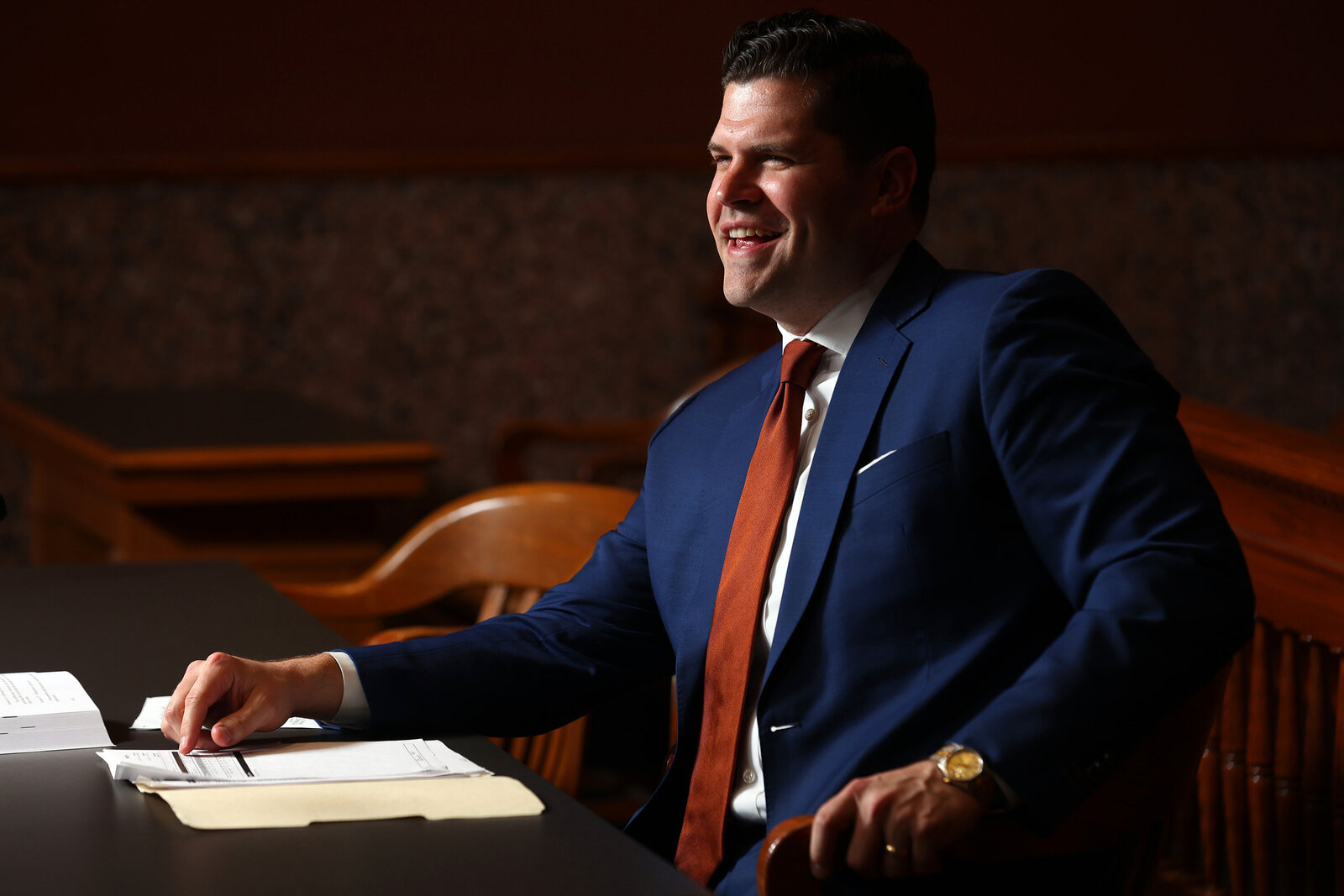By Graham Norris
Accidental discharge of a firearm is a serious issue in Texas that can lead to severe legal consequences. Even when an unintended discharge results from a genuine mistake, the law may still impose significant penalties.
Gun owners need to know what Texas law says about accidental discharges and the potential consequences. This guide provides a comprehensive overview of what constitutes an accidental discharge, the penalties you might face, and how you can defend against these charges with the help of an experienced Fort Worth firearms lawyer.
Facing Criminal Charges in Fort Worth?
Don’t wait – your freedom and future are at stake. Get experienced legal representation now.
Call (817) 859-8985 Free ConsultationAvailable 24/7 • Former Prosecutor • Award-Winning Defense
What Is Accidental Discharge of a Firearm in Texas?
In Texas, an accidental discharge occurs when a firearm is unintentionally fired due to mishandling, negligence, or mechanical failure. The law distinguishes between accidental discharges and intentional acts, focusing on the circumstances surrounding the incident.
“If it’s truly an accident, it’s not a criminal offense,” says Graham Norris, an experienced firearm crimes attorney and founder of Norris Legal Group. “Where it becomes criminal is if you’re accused of being reckless or criminally negligent.”
An accidental discharge is typically viewed as a mistake, often resulting from carelessness or a lack of awareness about firearm handling. In contrast, an intentional discharge implies a deliberate action to fire the weapon. Texas law regarding firearm crimes takes these distinctions seriously, as they influence the charges and penalties imposed on the individual involved.
Criminal Negligence vs. True Accidents
Was it just an unfortunate and largely unavoidable accident, or was their negligence involved that would make the accidental discharge criminal? That is the critical question, Graham says.
“A lot of times this happens where somebody keeps their firearm in an unsafe location, or is maybe playing with their gun, or maybe has had too much to drink and is showing off or doing something like that which results in an accidental discharge,” he notes.
However, even if accused, the prosecution has the burden of proof. An experienced attorney can help raise reasonable doubts that could get the charge dismissed or result in a not-guilty verdict.
“The prosecution has to show that there was actual conduct that was either reckless or criminally negligent, and so the facts matter in that circumstance,” Graham says.
Legal Penalties for Accidental Discharge
The penalties for accidental discharge of a firearm in Texas can vary widely based on the circumstances of the incident and the severity of the resulting consequences.
Texas Penal Code § 22.05 states that a person has committed an offense if he or she “recklessly engages in conduct that places another in imminent danger of serious bodily injury.” This would be considered a Class A misdemeanor, which carries penalties of up to one year in jail and fines up to $4,000.
However, if authorities believe that the person knowingly pointed the weapon at another individual or at a building/vehicle they couldn’t be sure was unoccupied, they may elevate the charge to deadly conduct with a firearm in Texas, which is a third-degree felony, with penalties ranging from 2 to 10 years in prison and fines of up to $10,000.
Under Texas Penal Code § 42.12, it is also a Class A misdemeanor to “recklessly” discharge a firearm on private property in Texas within the corporate limits of a municipality with a population of 100,000 or more.
Common Scenarios Leading to Accidental Discharge
Accidental discharges can occur in a variety of situations, often involving human error or equipment malfunction. Some common scenarios include:
- Mishandling the Firearm: Failing to follow proper safety protocols, such as keeping the finger off the trigger, can lead to accidental discharge.
- Mechanical Malfunctions: Defects or malfunctions in the firearm’s design or mechanics may cause the weapon to fire unexpectedly.
- Negligent Storage or Handling: Storing a loaded firearm improperly or failing to secure it from unauthorized users can result in accidental discharge.
- Unintentional Trigger Pull: Accidental pulling of the trigger, often due to unfamiliarity with the firearm, can lead to unintended firing.
Accidental Discharge vs. Reckless Endangerment: Illustrative Scenarios
Here are some scenarios to illustrate this distinction.
Likely Considered Accidents:
- Cleaning Mishap: While cleaning a properly unloaded firearm, a small piece of debris causes the firing pin to release, resulting in a discharge. The owner was following proper cleaning procedures in a safe environment.
- Manufacturing Defect: A new firearm discharges unexpectedly due to a manufacturing defect in the trigger mechanism, despite the owner handling it properly.
- Holster Snag: While holstering a firearm, a piece of clothing gets caught in the trigger guard, causing an unintended discharge. The owner immediately reported the incident and was following proper carrying procedures.
- Mechanical Failure: An older firearm with a worn sear discharges when set down on a table, despite the safety being engaged. The owner was unaware of the mechanical issue.
Potentially Considered Reckless Endangerment:
- Intoxicated Handling: At a party, an intoxicated individual decides to show off their firearm to friends, leading to an accidental discharge.
- Improper Storage: A loaded firearm is left unsecured on a coffee table, resulting in a child accessing it and causing a discharge.
- Ignoring Safety Protocols: During a hunting trip, a hunter fails to engage the safety and keeps their finger on the trigger while walking, leading to an accidental discharge when they trip.
- Showing Off: Someone attempts to recreate a dangerous gun trick they saw online, resulting in an unintended discharge in a populated area.
- Negligent Modifications: After making amateur modifications to a firearm’s trigger mechanism to make it “lighter,” the owner experiences an unexpected discharge while handling the weapon.
The key differences in these scenarios are:
- Intent and awareness of risk
- Adherence to safety protocols
- Context and environment of the incident
- Steps taken to prevent accidents
Remember, each case is unique, and the specific details and circumstances will play a crucial role in how law enforcement and the legal system view the incident. If you find yourself involved in any firearm-related incident, it’s essential to consult with a qualified attorney who can provide guidance based on the specific details of your situation.
Factors Influencing Charges and Penalties
Several factors can influence how accidental discharge cases are charged and the severity of the penalties imposed.
Intent and Negligence
In cases of accidental discharge, the court will closely examine whether the incident resulted from negligence or a genuine accident. The prosecution must establish that the defendant’s actions were careless enough to constitute negligence. Key considerations include:
- Level of Care: Assessing whether the defendant exercised reasonable care in handling or storing the firearm.
- Prior Knowledge: Determining if the defendant was aware of potential issues with the firearm, such as mechanical malfunctions.
- Safety Measures: Evaluating whether appropriate safety measures were followed to prevent accidental discharge.
Location and Circumstances
The location and circumstances of the discharge can significantly impact the charges and penalties. Certain environments and conditions may elevate the seriousness of the offense:
- Public vs. Private Property: Discharges occurring in public spaces are likely to face harsher penalties due to increased risk to bystanders.
- Presence of Bystanders: Incidents involving potential harm to others can lead to more severe charges.
- Time of Day: The time and context of the discharge, such as during a public event or in a crowded area, can influence the severity of the charges.
How an Experienced Texas Firearm Crimes Attorney Will Defend an Accidental Discharge Case
Facing charges for the accidental discharge of a firearm requires a skilled legal defense to navigate the complexities of Texas firearm laws. An experienced attorney will employ a variety of defense strategies to challenge the prosecution’s case and seek a favorable outcome for their client. Here are some key steps involved in building a strong defense:
- Demonstrating Lack of Intent: Prove that the discharge was truly accidental with no intent to harm or act recklessly by presenting character evidence and witness testimonies supporting responsible firearm ownership.
- Identifying Mechanical Malfunction: Show that a defect or mechanical issue caused the discharge through expert testimony and maintenance records, proving that the incident was beyond the defendant’s control.
- Proving Improper Handling by Others: Establish that another person mishandled the firearm by providing evidence of the chain of custody and using witness accounts to confirm that someone else was responsible.
- Highlighting Responsible Behavior: Present evidence of the defendant’s history of responsible gun ownership, including proper firearm storage and regular safety training, to demonstrate that the incident was a rare accident.
- Challenging the Prosecution’s Case: Focus on questioning the prosecution’s ability to prove recklessness or criminal negligence, emphasizing that the defendant’s actions did not meet this standard.
In some cases, your attorney may explore whether your actions qualify as legitimate self-defense under Texas law and address common misconceptions about self-defense in Texas that might apply to your situation.
By considering the full context of the incident, including all relevant details and circumstances, an experienced attorney can effectively defend against charges of accidental discharge and work toward a positive resolution.
At Norris Legal Group, our knowledgeable attorneys are dedicated to protecting your rights and providing tailored legal support to achieve the best possible outcome for your case.
Contact Us: Secure Your Defense Today
If you are facing charges related to the accidental discharge of a firearm in Texas, it is crucial to act quickly and secure experienced legal representation. Norris Legal Group is here to provide the guidance and support you need to navigate the legal process and protect your rights.
Contact Norris Legal Group today for a free consultation to discuss your case and explore your legal options. Don’t wait—take the first step towards securing your future and ensuring your rights are upheld throughout the legal process.

Graham Norris
Principal Attorney & Founder, Norris Legal Group PLLC
Graham Norris is an award-winning criminal defense attorney and former Tarrant County prosecutor with over a decade of courtroom experience. He has earned countless dismissals and not guilty verdicts on charges ranging from misdemeanor assault to felony murder. Graham has been recognized as a National Trial Lawyers Top 40 Under 40 attorney, named a Texas Monthly Super Lawyers Rising Star, and selected as a Top Attorney by Fort Worth Magazine.
Former Assistant District Attorney • Texas A&M School of Law Graduate • Member, National Order of Barristers
Need Legal Help? Call (817) 859-8985
Read the Comments +